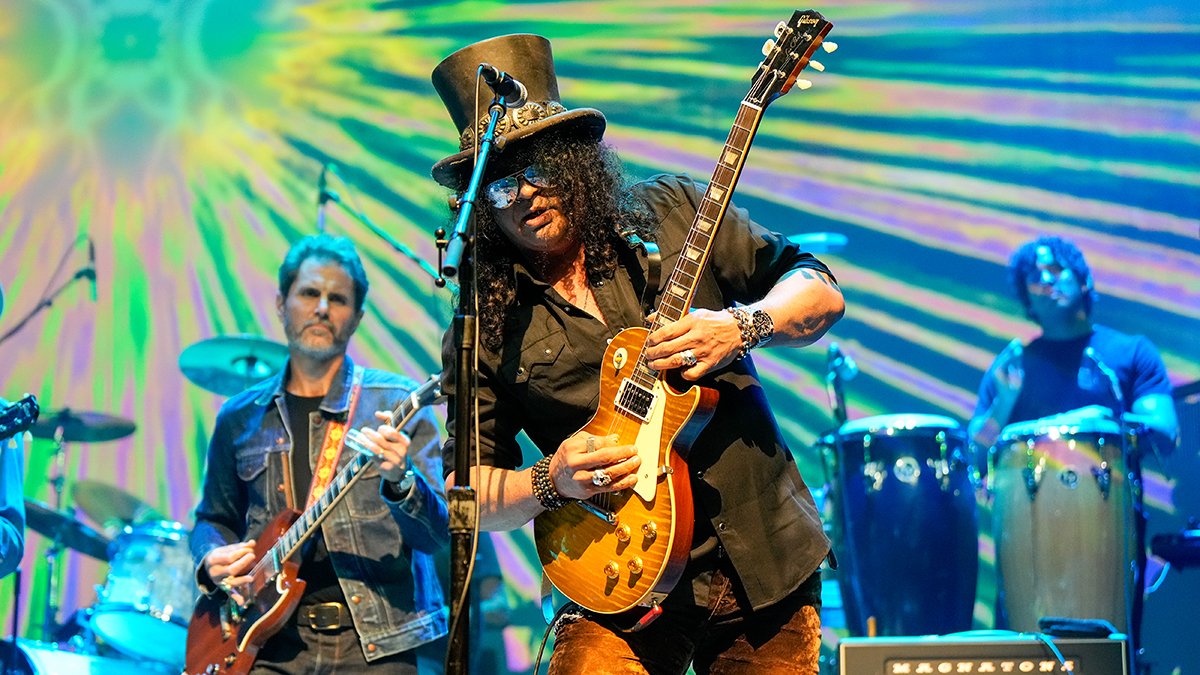Best left-handed guitars: Top electric and acoustic choices from Fender, PRS, Squier and more
We’re showing the lefties some love with our expert pick of the best left-handed guitars. Read on to find your perfect match…
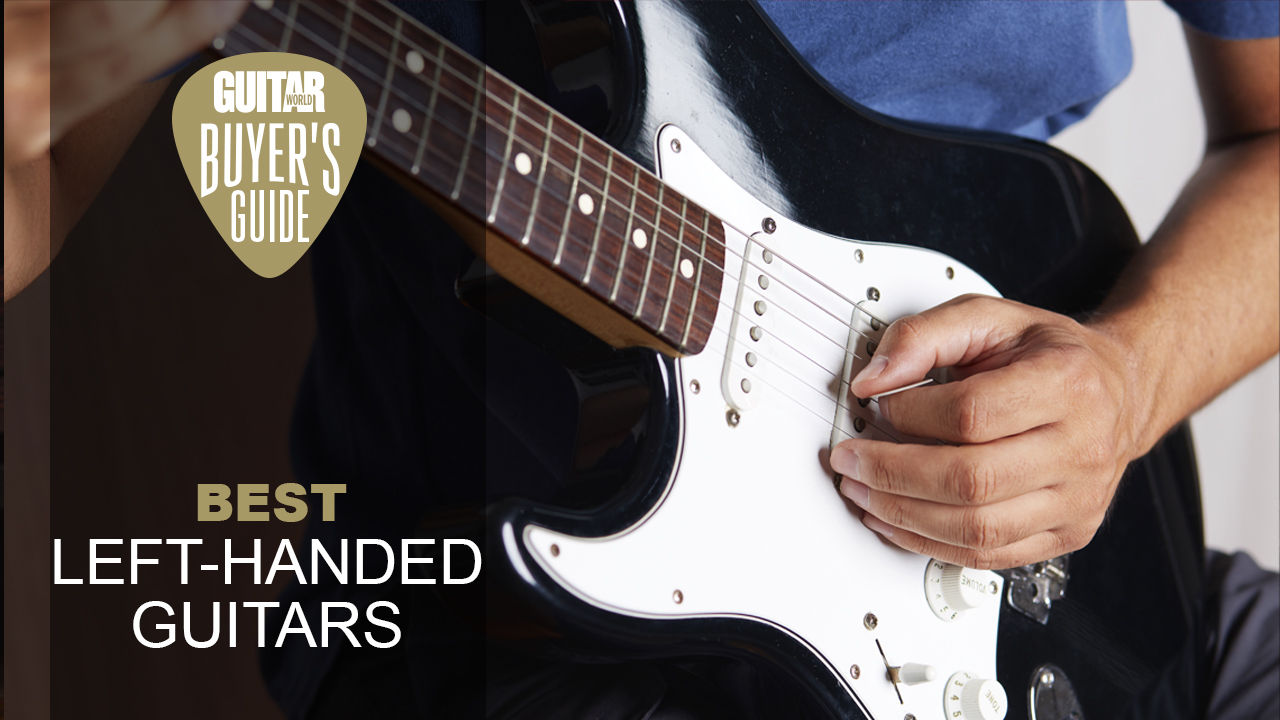
Although Jimi Hendrix is lauded as one of the best left-handed guitar pioneers, countless other lefties have graced the guitar world and left an indelible mark. Tony Iommi, Albert King, Dick Dale and Kurt Cobain are just a few guitar heroes who happened to pick their notes with the left-hand.
With that in mind, it is quite astonishing to discover that guitar manufacturers have long overlooked left-handed guitar production. This neglect becomes especially evident when we consider the iconic image of Hendrix having to restring his renowned Stratocaster upside down. This served as a stark reminder of the severe scarcity of awesome left-handed guitars which were available on the market.
Thankfully, the tides have turned; major manufacturers like Fender, PRS and Gibson now stock a range of options for lefties, and the best left-handed guitars are every bit as good as their right-handed counterparts. No longer do left-handed players have a limited choice when it comes to selecting their next axe as the market has come a long way in diversifying the choice.
Of course, the downside to all of these choices is that it could take you an age to plow through all the different products on the market, comparing their specs to find the right model for your needs and budget. It could but it won’t, because we’ve done all the hard work for you. Here then, reader, is our definitive yet easy-to-digest guide to the best left-handed guitars you can buy right now
Best left-handed guitars: Guitar World’s choice
The Telecaster design hasn’t changed much since its inception in the 1950s, and that’s what makes the Fender Player Telecaster Left-Handed our top choice. It sports that legendary Fender aesthetic, along with outstanding hardware, and all at a price that’s exceptionally wallet-friendly. The Player Series pickups deliver plenty of edge for those who want to play with higher gain, while the cleans are simply outstanding.
If acoustic guitar is more your thing, then you can’t go wrong with the Martin LX1E Little Martin, which, despite its diminutive body, delivers a huge sound. Its smaller stature not only provides easier playability, it makes this guitar the perfect travel companion for writing on the road.
Best-left handed guitars: Product guide
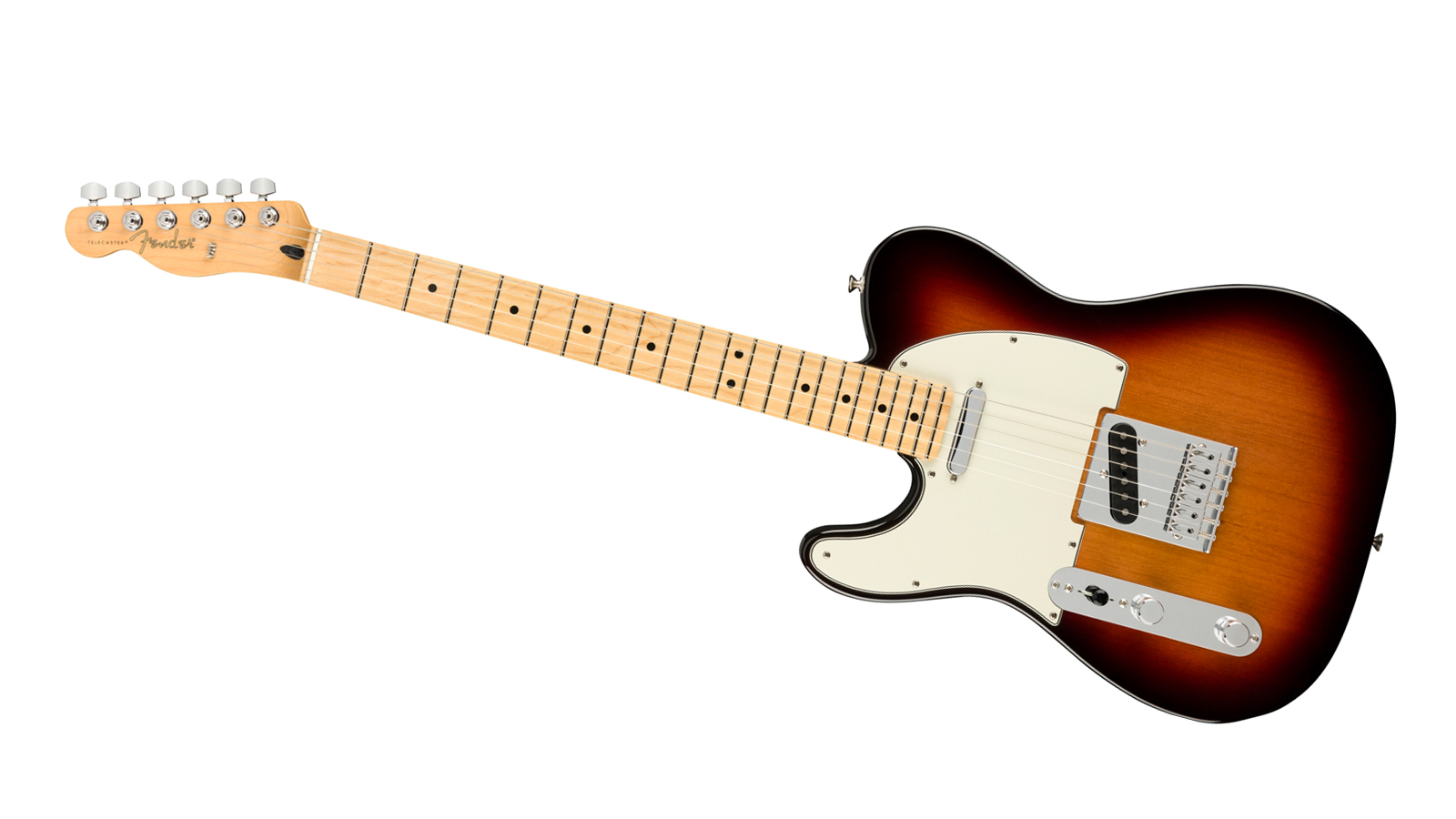
1. Fender Player Telecaster Left-Handed
Our expert review:
Specifications
Reasons to buy
Reasons to avoid
Widely touted as the most versatile guitar that money can buy, the Fender Player Tele will cover pretty much anything from jazz through to hard rock. Thanks to its time-tested pickup configuration, this guitar is a true workhorse that can do pretty much any sound.
The two Player Series Alnico V pickups offer completely opposing tones between the bridge and the neck. This means you can get pretty much any sound you desire, whether it’s a pristine, clean funk tone or something grittier for hard rock riffs.
The neck plays incredibly well; there’s plenty of hefty feel for chord work, but it’s not so ungainly that the leads and riffs don’t fly forth from your fingers. As you’d expect from a big brand such as Fender, the hardware is rock-solid, ensuring your strings ring true while holding their tuning admirably.
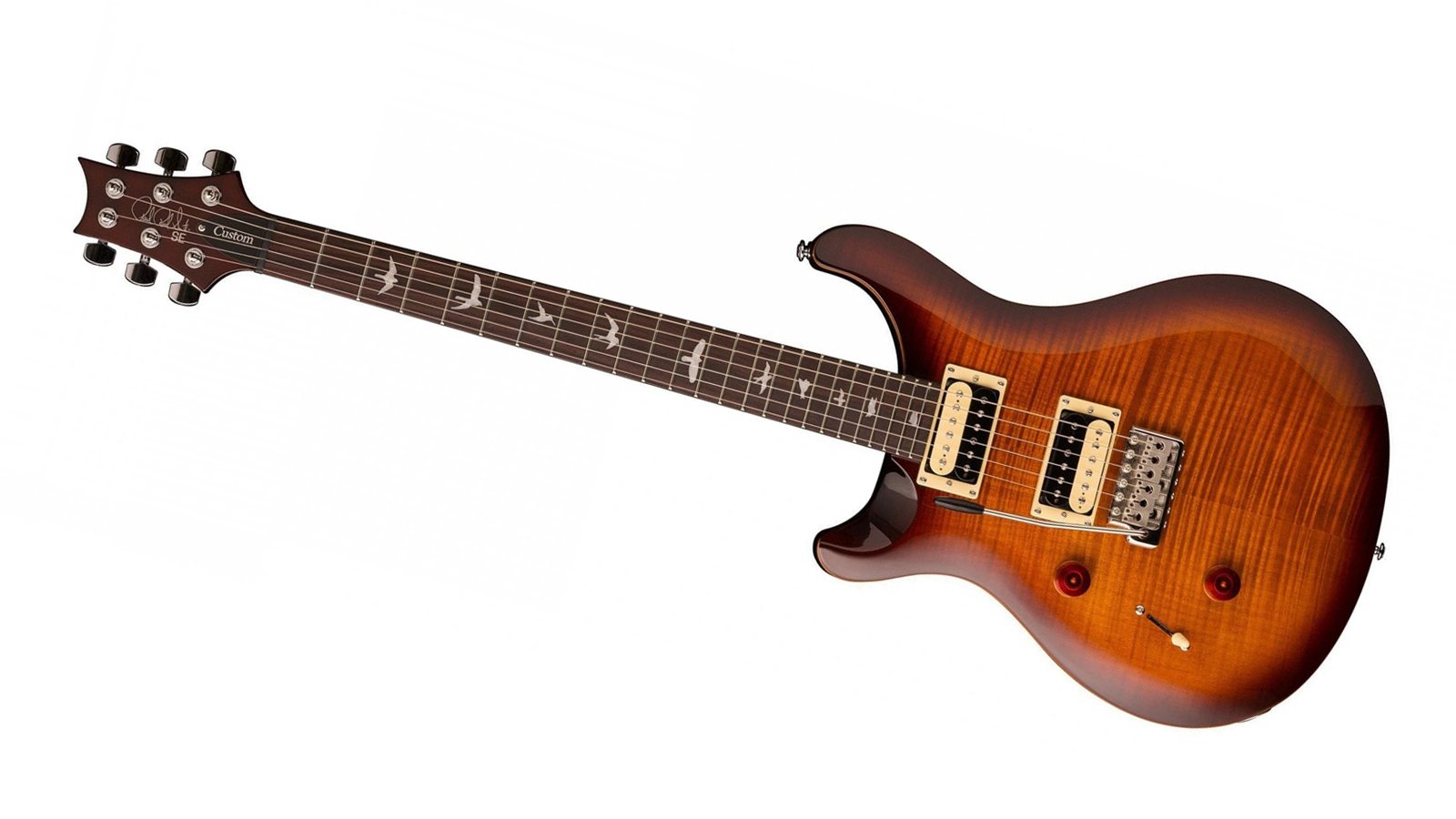
Specifications
Reasons to buy
Reasons to avoid
Based on its far pricier American-made counterpart, the PRS SE Custom 24 ‘Lefty’ goes well beyond what you’d expect in terms of quality for the price. Sporting a mahogany body with a maple veneer top and a rosewood fretboard, its spec is on a par with guitars costing twice as much.
The pickups sound phenomenal, and the option to coil-split will give you more tonal variety in your playing – great for experimenting with new sounds. Add in the solid, PRS-designed vibrato system and you’ve got a guitar that can cover lots of ground.
The wide, thin neck profile might feel a little strange if you’re used to more traditional neck shapes, but it’s incredibly playable, giving you a platform that’s as great for chord work as it is speedy lead runs.
Read the full PRS SE Custom 24 review
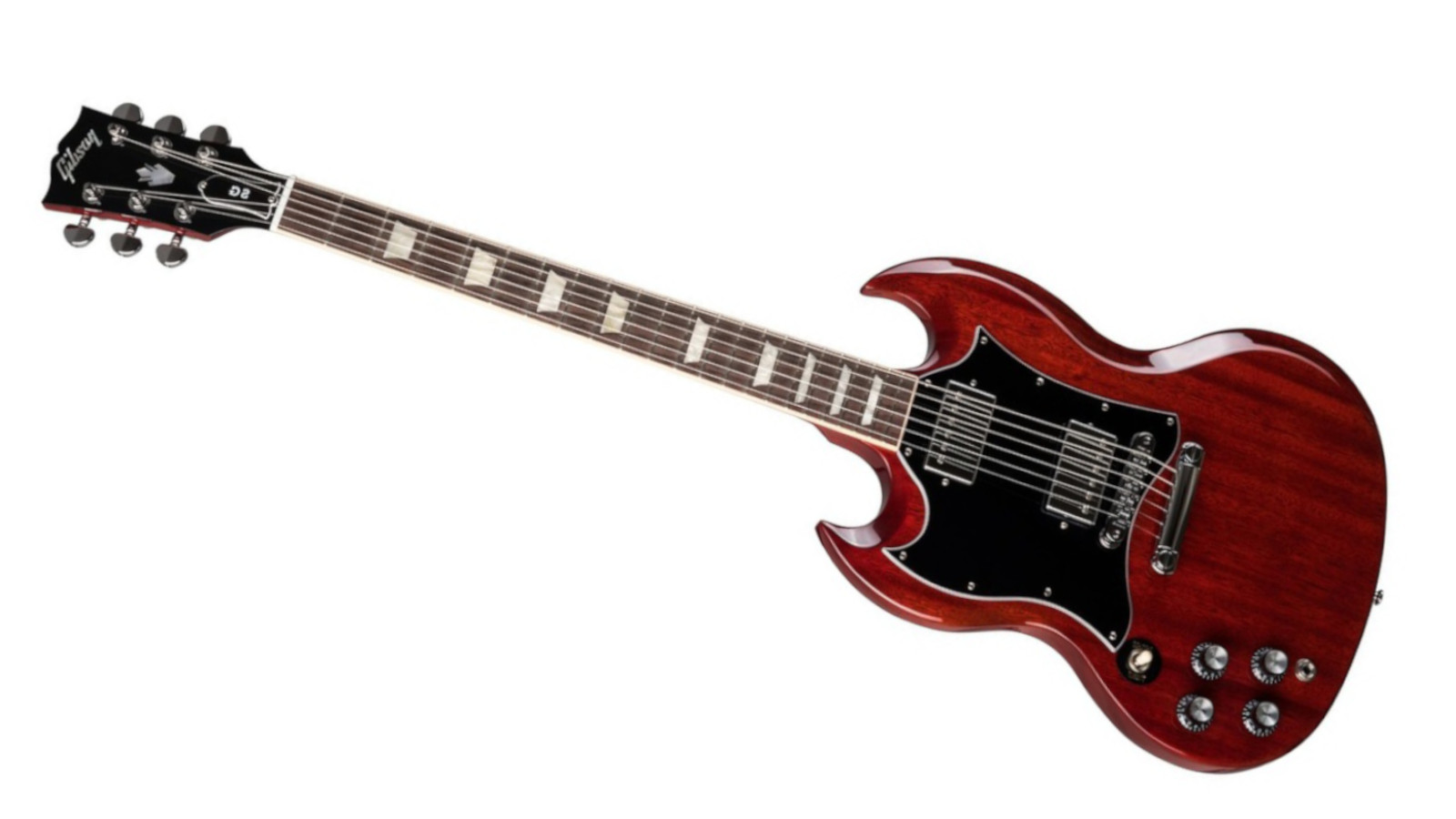
3. Gibson SG Standard Left-Handed
Our expert review:
Specifications
Reasons to buy
Reasons to avoid
For left-handed guitarists who have a penchant for classic rock and want to indulge themselves, the SG Standard is an absolute gem. When it comes to capturing that sought-after Gibson sound, the SG Standard delivers with its exceptional pickups – the 490R and 490T humbuckers.
If you’ve been put off by the Les Paul due to its weight, the SG is far lighter, and for many, a lot more comfortable to play. The body is a lot thinner and the rounded profile mahogany neck feels slimmer than that of a typical Les Paul and is a dream to play.
The Tune-o-matic bridge and Grover Rotomatic tuners finish the hardware spec on this SG and are a tried and tested combination offering solid tuning stability. The SG is available in Ebony for those looking for something a little meaner, but we can’t look past the Heritage Cherry – as the name implies, it’s a classic!
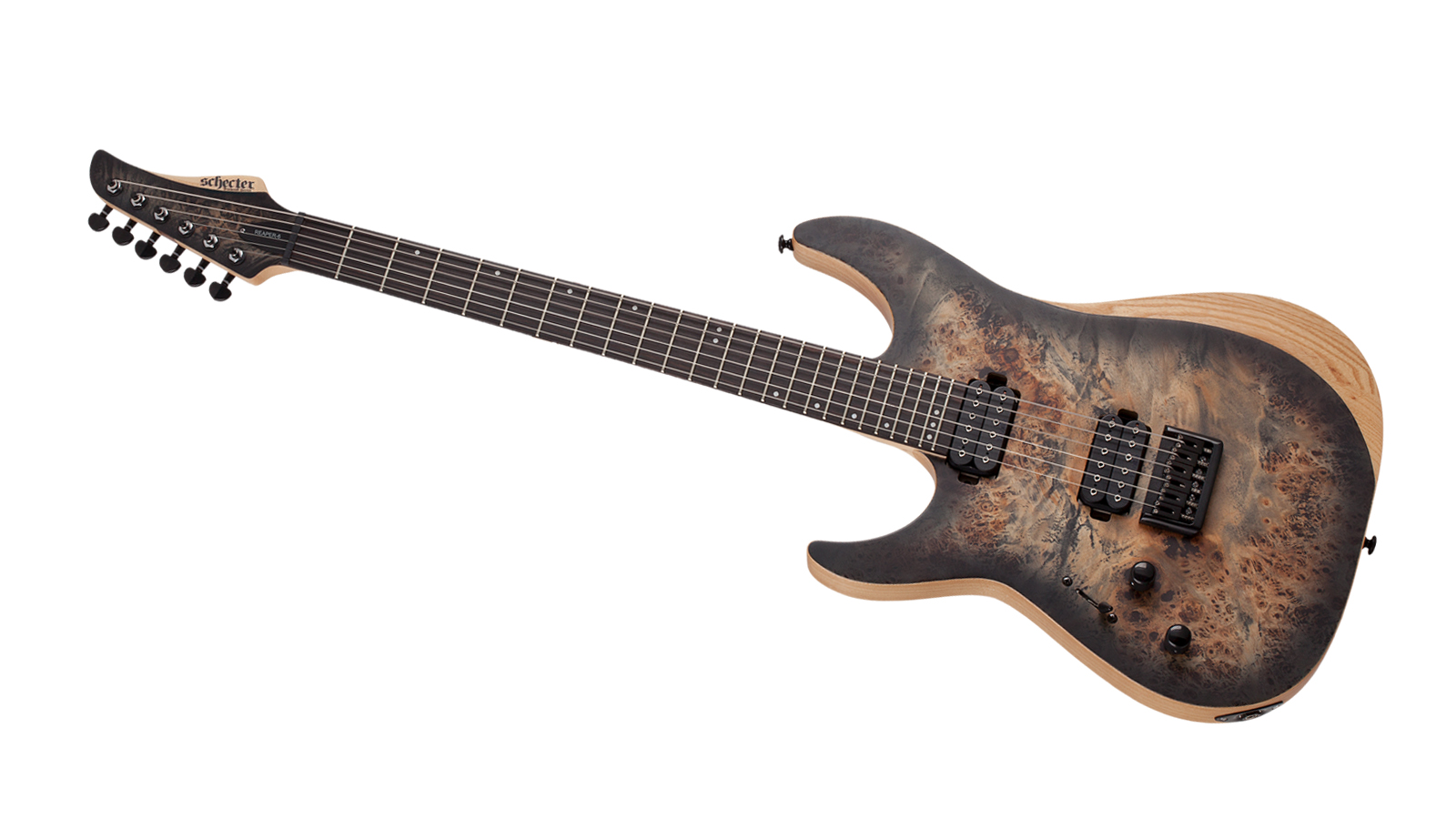
4. Schecter Reaper-6 LH
Our expert review:
Specifications
Reasons to buy
Reasons to avoid
If you’re one of those lefty guitarists who love to get heavy, then we wholeheartedly recommend the Schecter Reaper-6 LH. Not only does it look gorgeous with its eye-catching burl top; the swamp ash body will give you bags of natural resonance for some epic tones.
The neck on this guitar is one of the fastest we’ve ever played, and the access to the higher frets is unparalleled. It lends itself equally well to technical riffing as it does sweep picking, while still holding up to bending and techniques you’d find in less-heavy styles of music.
The Schecter pickups will give you the option to coil-split – accessible via a push-pull switch on the tone knob. This will give you a fantastic array of sounds to play with, from heavy distortion to atmospheric, clean tones.
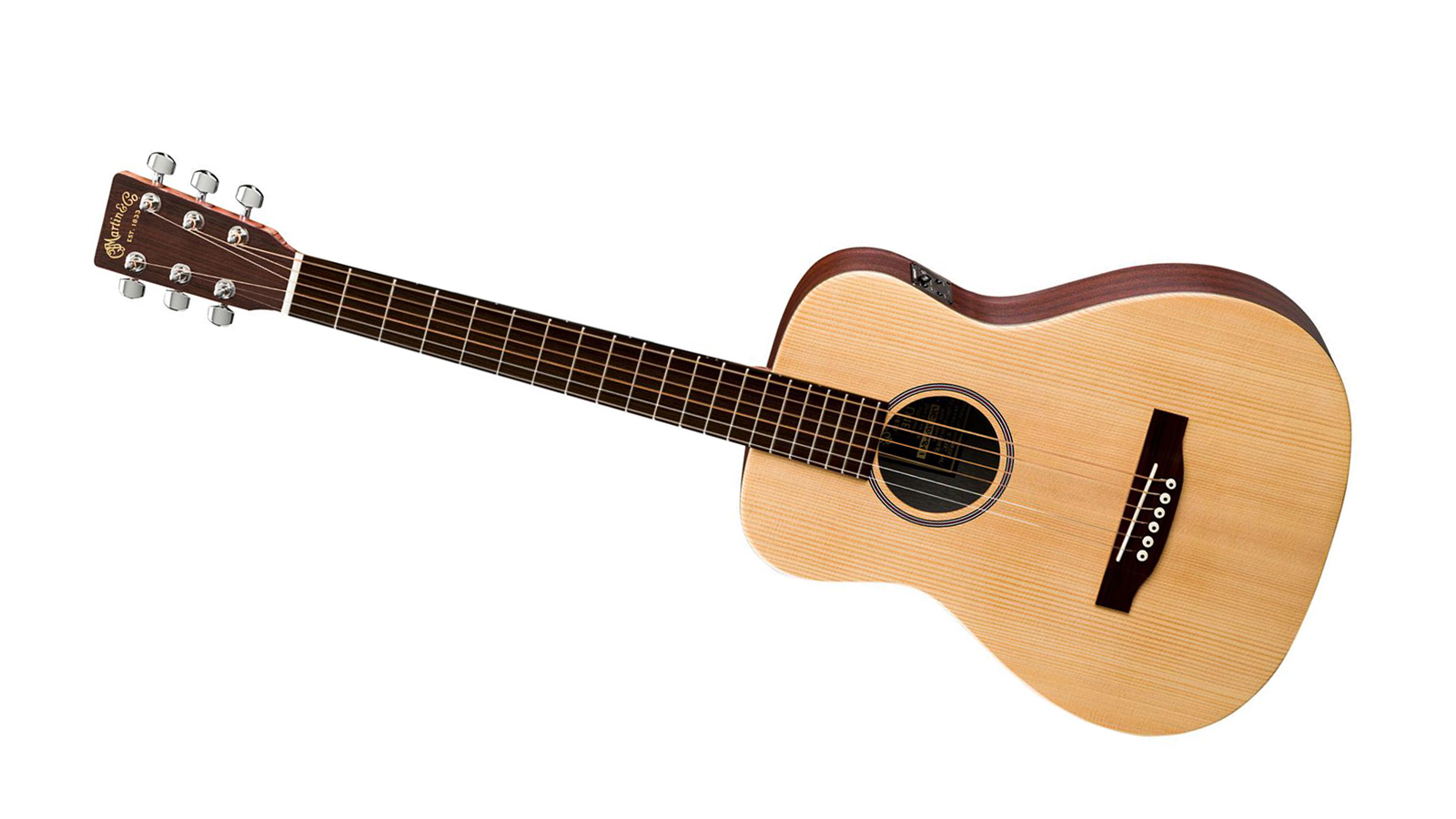
Specifications
Reasons to buy
Reasons to avoid
Small-body acoustics are very popular right now, largely thanks to the release of signature models for Ed Sheeran and Taylor Swift. Yet, despite some diminutive dimensions, the LX1E Little Martin delivers an impressive sound; one that’s warm and resonant with plenty of depth.
Thanks to its low oval profile, the neck provides a fantastic playing experience, and you’ll feel equally comfortable fingerpicking classical pieces as you are bashing out anthemic chords. The Fishman Sonitone pickup sounds great, with volume and tone controls cleverly located out of sight in the soundhole.
With its small scale and body size, the LX1E Little Martin would make an excellent travel companion for the gigging singer-songwriter. It’s also made of FSC-certified woods, which means it’s great for the environment.
Read the full Martin LX1E Little Martin review
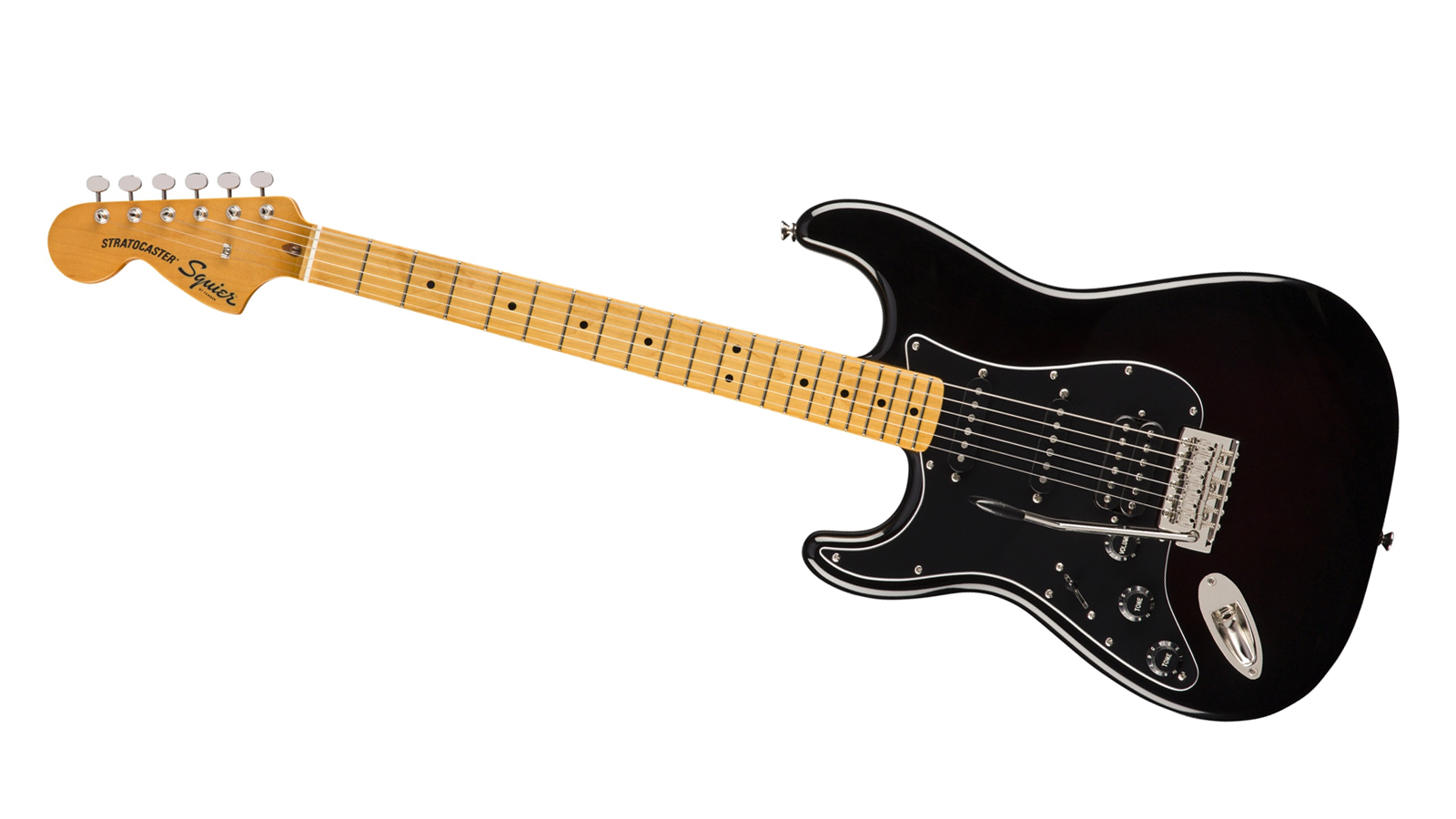
6. Squier Classic Vibe ’70s Stratocaster Left-Handed
Our expert review:
Specifications
Reasons to buy
Reasons to avoid
Perfect for beginner and intermediate players, the Squier Classic Vibe ’70s Stratocaster will give you vintage tone and aesthetic with thoroughly modern build quality and performance. Not only does it sound incredible, it plays great too.
HSS pickup configurations are inherently versatile, so you can do everything from hard rock grit to country twang with this guitar. The humbucker will give you plenty of grunt, while the neck pickup has a fantastic warmth for clean tones and solos.
The maple fingerboard offers great looks and playing feel, while the classic Fender modern C-neck will feel comfortable to the majority of guitar players. Couple that with a vintage-style tremolo alongside vintage-style tuning machines, and you’ve got a guitar that can do pretty much anything.
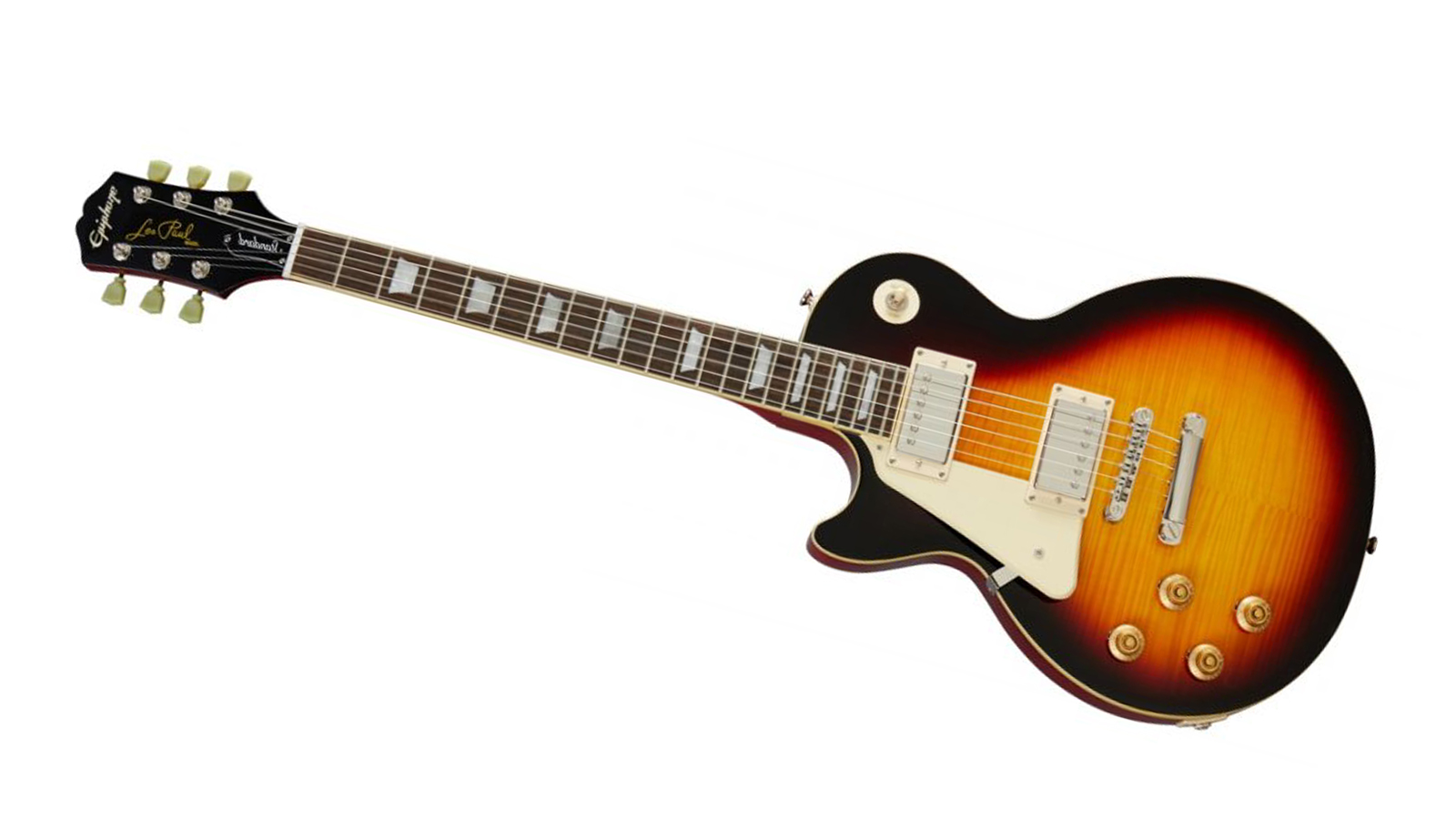
Specifications
Reasons to buy
Reasons to avoid
Epiphone’s ‘Inspired by Gibson’ series offers players the chance to experience what a fully fledged Gibson sounds and feels like, without the bank-breaking cost. Coming in some ravishing finishes, the Epiphone Les Paul Standard ’50s Left-Handed delivers blues and rock tone in spades.
The stars of the show are the two ProBucker pickups, which deliver a warm and sweet tone. The bridge pickup is slightly overwound for extra bite, while the neck offers less output for a more-rounded lead tone.
This guitar also features a ’59 rounded medium C-neck profile – the original-spec neck that made Les Pauls famous for their playability. A LockTone ABR bridge and vintage deluxe tuners round everything off for optimum tuning stability and incredible sustain.
Read the full Epiphone Les Paul Standard ’50s review
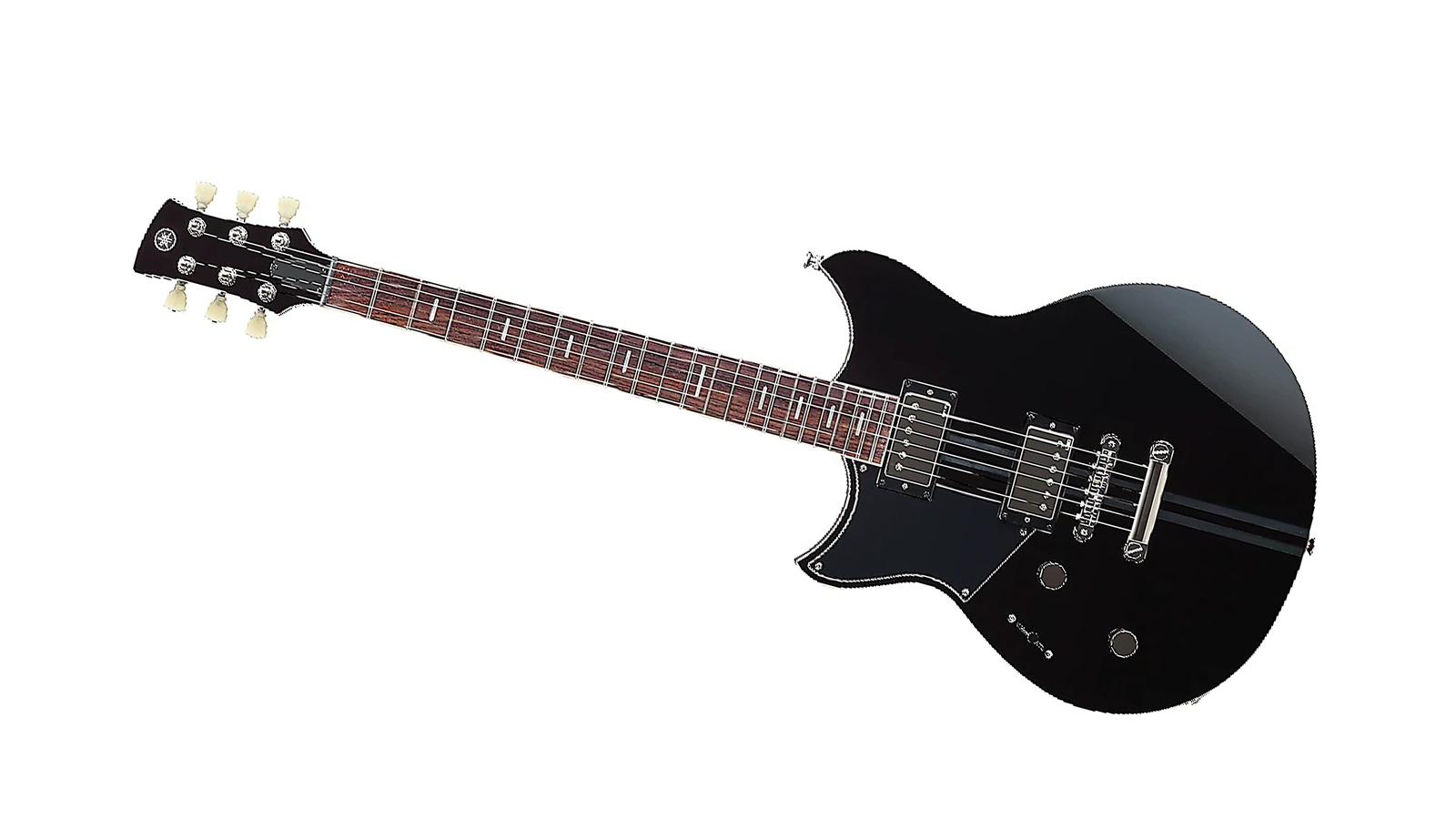
8. Yamaha Revstar Standard RSS20L Left-Handed
Our expert review:
Specifications
Reasons to buy
Reasons to avoid
The Revstar range has been around for a few years now, gaining advocates like Chris Buck, Sarah Lipstate and Jeff Schroeder. If those names aren’t enough to convince you of Revstar’s quality, allow us.
Equipped with VH5n and VH5b humbuckers, a 5-way selector switch, and a push-pull pot, the RSS20L is super versatile. The humbuckers are very articulate and positions 2 and 4 will put them out of phase, producing quackier single-coil sounds. Yamaha has termed their push-pull pot as a ‘focus switch’ which activates a passive boost if you want a little extra grit.
Other interesting appointments include a 3-piece carbon reinforced neck which makes the tuning stability rock solid. A chambered mahogany body helps with overall weight and the Swift Blue finish will make this the ideal gigging guitar as Yamaha has accounted for both comfort and aesthetic.
Read the full Yamaha Revstar Standard RSS20L review
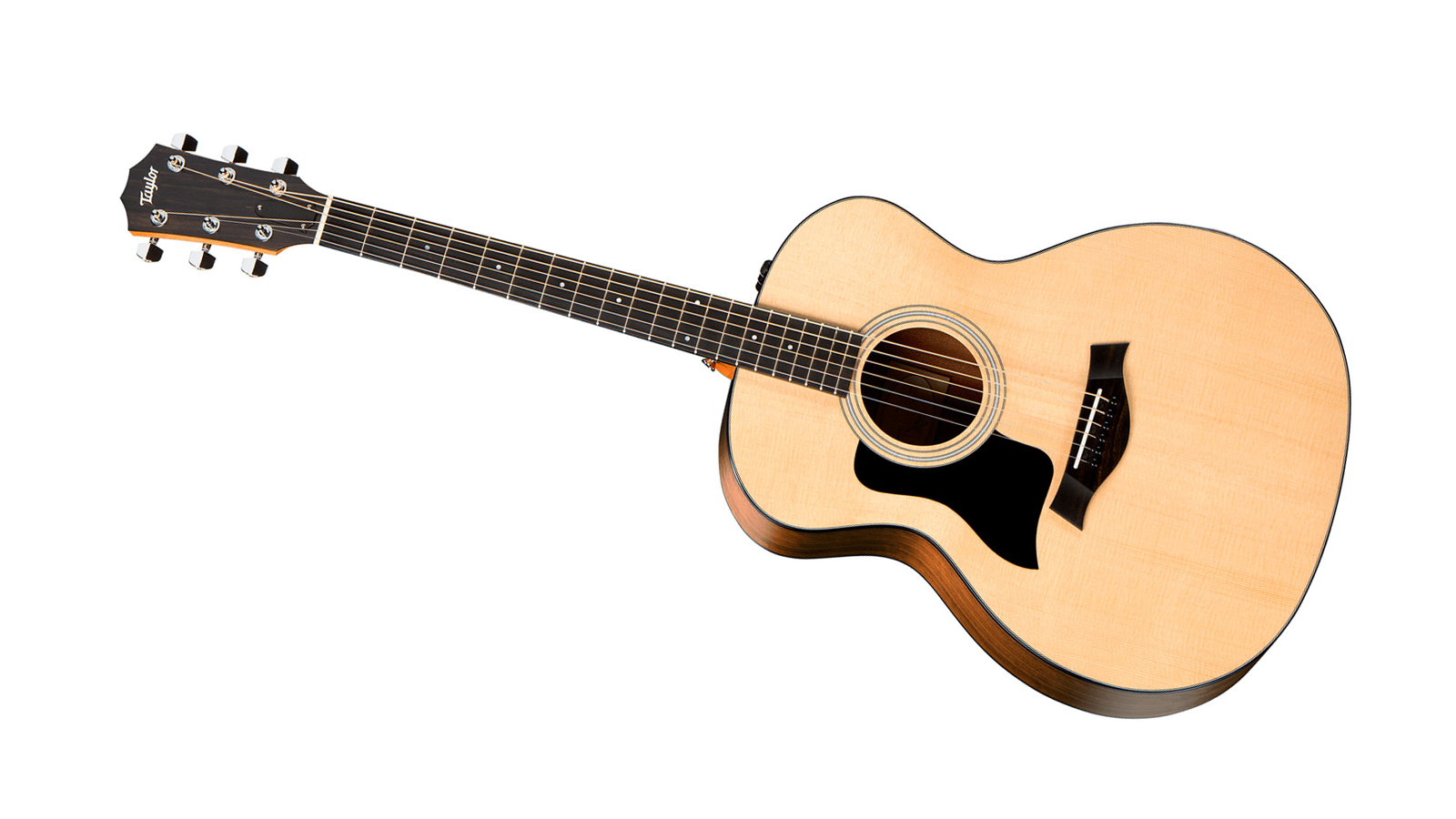
9. Taylor 114e Grand Auditorium Left-Handed
Our expert review:
Specifications
Reasons to buy
Reasons to avoid
Taylor is widely considered to be the premium acoustic guitar maker in the world. It has a reputation for using only the finest tonewoods and superior building techniques – both of which you’ll find in the Taylor 114e Grand Auditorium Left-Handed.
The Grand Auditorium-sized body offers fantastic resonance, the layered walnut back and sides combining superbly with a Sitka spruce top. It produces a sound that’s focused in the mid-range while powerfully projecting your playing.
The neck of this guitar is cut ever so slightly smaller than that of a regular Taylor, which will give you a much easier playing experience, making chords more comfortable and lead work silky smooth.
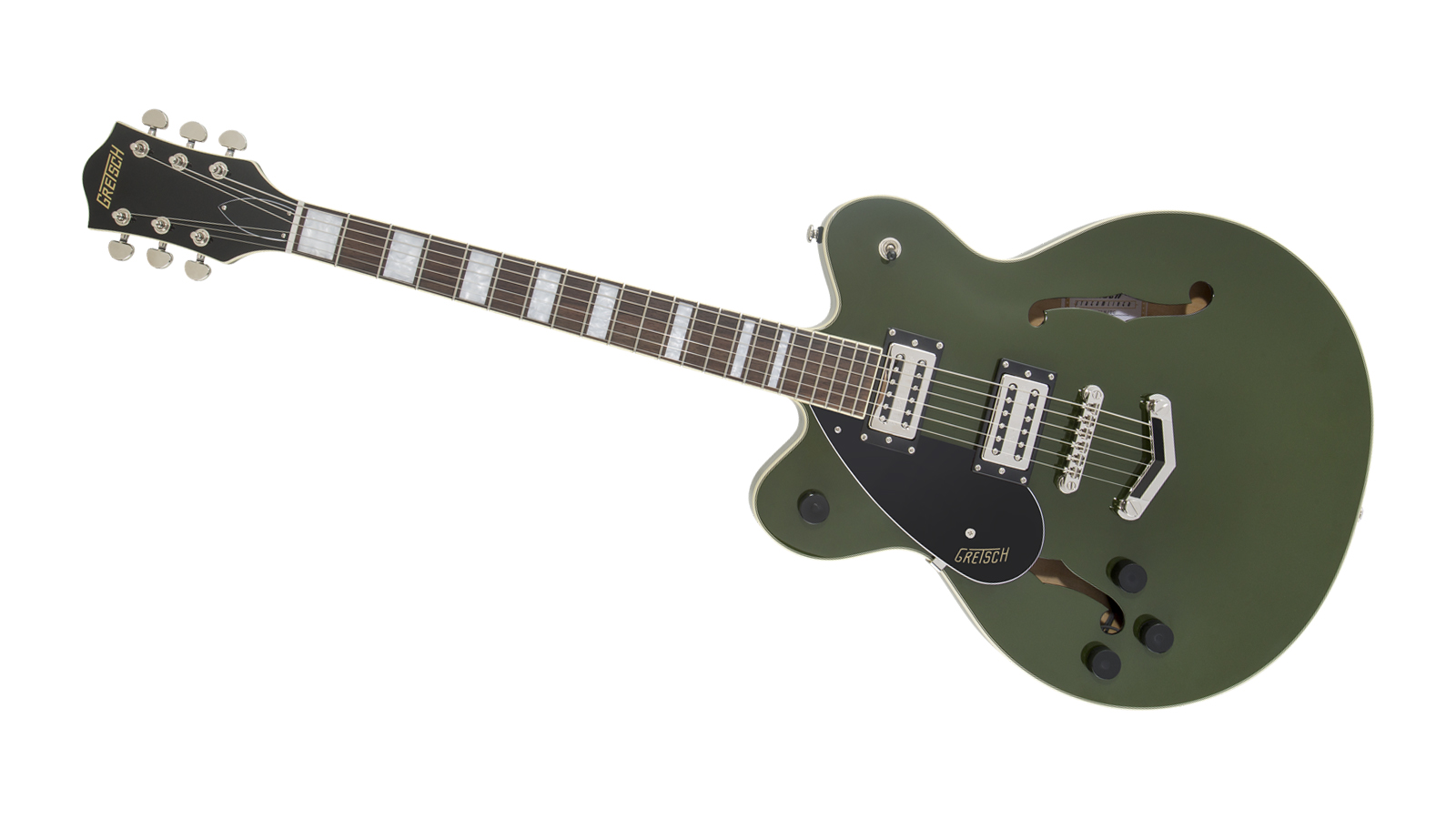
10. Gretsch G2622 Streamliner Center Block Left-Handed
Our expert review:
Specifications
Reasons to buy
Reasons to avoid
The Gretsch G2622 Streamliner Center Block Left-Handed is a classic rock ’n’ roll guitar. The hollow body has a chambered center block made from spruce, which helps cut down on feedback – the bane of many a hollowbody guitar player.
A pair of Gretsch’s Broad’Tron BT-2S pickups will give you heaps of versatility with your tones, encompassing everything from country twang through to classic rock growl. They deliver a high output that’s very well balanced with the body, meaning you’ll get an even tone across the lows, mids and high end.
The thin U-profile neck has rounded shoulders, which makes this guitar great for chord work. It’s slightly thinner than a regular U-profile neck, so you can still get plenty of speed up in lead runs and hard rock riffing.
Best left-handed guitars: Buying advice
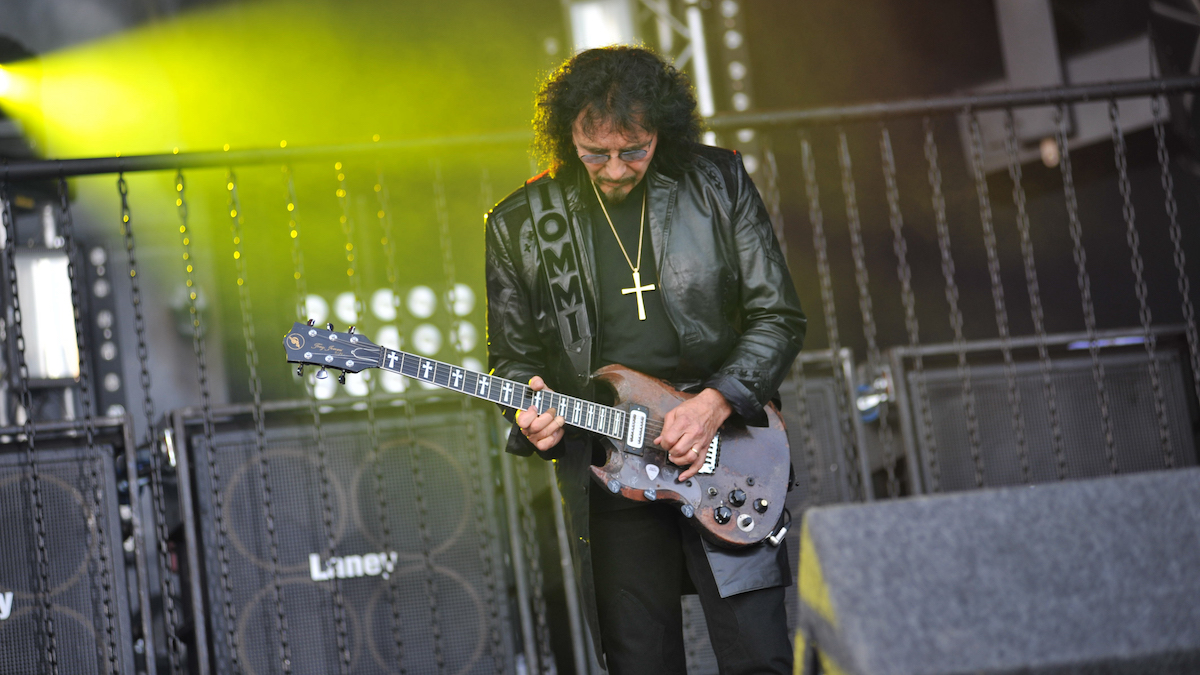
How to choose the best left-handed guitar for you
You can trust Guitar World
Before we get into the finer details, it's important to understand that buying a left-handed guitar is no different to buying one that’s right-handed. All the important aspects are the same; it’s merely the orientation that’s changed. But whether you’re left-handed or not, that high-output, dual-humbucker Schecter is probably not going to serve you very well if you primarily play funk. By that same logic, picking a traditional-sounding Telecaster wouldn’t be the best choice for the metalheads among us. However, there are no hard and fast rules here, because making music is all about bucking trends not following them.
The two most important aspects of the electric guitar are considered by most to be the pickups and the shape of the neck (known as the neck profile). Different types of pickups will give you different sounds, with single coils sounding bright and snappy, and humbuckers delivering a warm and more-rounded tone. The shape of the neck is a crucial part of how the guitar will play, with a bigger, more-rounded profile offering a better feel for chords and bending notes, and a slimmer neck helping your hands to move quicker – perfect for fast riffs and epic solos.
If you’re able to, try before you buy. Don’t just try one, either – getting a few guitars together at your local music shop and putting them through their paces is the best way to narrow down your search. You may even surprise yourself, finding that a hollowbody guitar sounds much better than anticipated, or that a fast-playing, metal guitar actually doesn’t deliver the type of sound you’re after. Ready to find your perfect left-handed guitar? Let’s rock and roll, then…
Why are left-handed guitars more expensive?
For many years left-handed guitars have often been higher priced than their ‘righty’ counterparts, but why is this? Do guitar brands have a vendetta against their left-handed brethren? Well, perhaps, but it’s mostly due to manufacturing costs and demand.
With only around 10% of the world’s population being left-handed, the demand for left-handed guitars is naturally lower compared to right-handed models. Additionally, many left-handed guitarists often adapt and play right-handed guitars instead. As a result, the production volume of left-handed guitars is significantly lower, leading to higher manufacturing costs per unit.
The combination of lower demand and the need for specialized manufacturing processes for left-handed guitars contributes to their higher price point. However, it’s not all doom and gloom for lefties as big brands like Martin and Fender have started to price their left and right-handed models a lot more closely, narrowing the cost difference between the two.

Which guitar is best for left-handed beginners?
The answer to this question is very similar if it was a right-handed player asking it. Although the choice is slightly less extensive for a leftie, a left-handed beginner should still consider a few basic factors when selecting their first guitar.
Comfort is key, since holding a guitar will be quite awkward in the preliminary stages. Body contours, weight, neck profile, scale length and cutaways will make your playing experience a little more comfortable allowing you to settle into playing a lot easier.
Versatility is also important. Since you may not know what style of playing you are aiming for initially, a versatile guitar will enable you to explore different niches. A guitar that has both single coil and humbucking pickups will cover a wide range of sonic territory, allowing you to learn different styles of music and widening your knowledge.
Squier has always offered affordable left-handed models and a guitar that particularly ticks all of the aforementioned boxes is the Squier ‘70s Stratocaster HSS left-handed. Providing a comfortable playing experience alongside both single coil and humbucking pickups, this ‘70s Strat would be a fantastic guitar for those lefties wanting to dip their toes.
How we choose the best left-handed guitars
Here at Guitar World, we are experts in our field, with many years of playing and product testing between us. We live and breathe everything guitar related, and we draw on this knowledge and experience of using products in live, recording and rehearsal scenarios when selecting the products for our guides.
When choosing what we believe to be the best left-handed guitars available right now, we combine our hands-on experience, user reviews and testimonies and engage in lengthy discussions with our editorial colleagues to reach a consensus about the top products in any given category.
First and foremost, we are guitarists, and we want other players to find the right product for them. So we take into careful consideration everything from budget to feature set, ease of use and durability to come up with a list of what we can safely say are the best left-handed guitars on the market right now.
Read more about our rating system, how we choose the gear we feature, and exactly how we test each product.
Related buyer's guides
- Start out right with the best beginner electric guitars
- Go unplugged with the best acoustic guitars for all budgets
- Blow the budget with the best high-end electric guitars
- These are the best electric guitars under $1,000
- Check out the best electric guitars under $2,000
All the latest guitar news, interviews, lessons, reviews, deals and more, direct to your inbox!

Matt is a Junior Deals Writer here at Guitar World. He regularly tests and reviews music gear with a focus on guitars, amps, pedals, modelers, and pretty much anything else guitar-related. Matt worked in music retail for 5 years at Dawsons Music and Northwest Guitars and has written for various music sites including MusicRadar, Guitar Player, Guitar.com, Ultimate Guitar, and Thomann’s t.blog. A regularly gigging guitarist with over 20 years of experience playing live and writing and recording in bands, he's performed everything from jazz to djent, gigging all over the country in more dingy venues than you can shake a drop-tuned guitar at.
